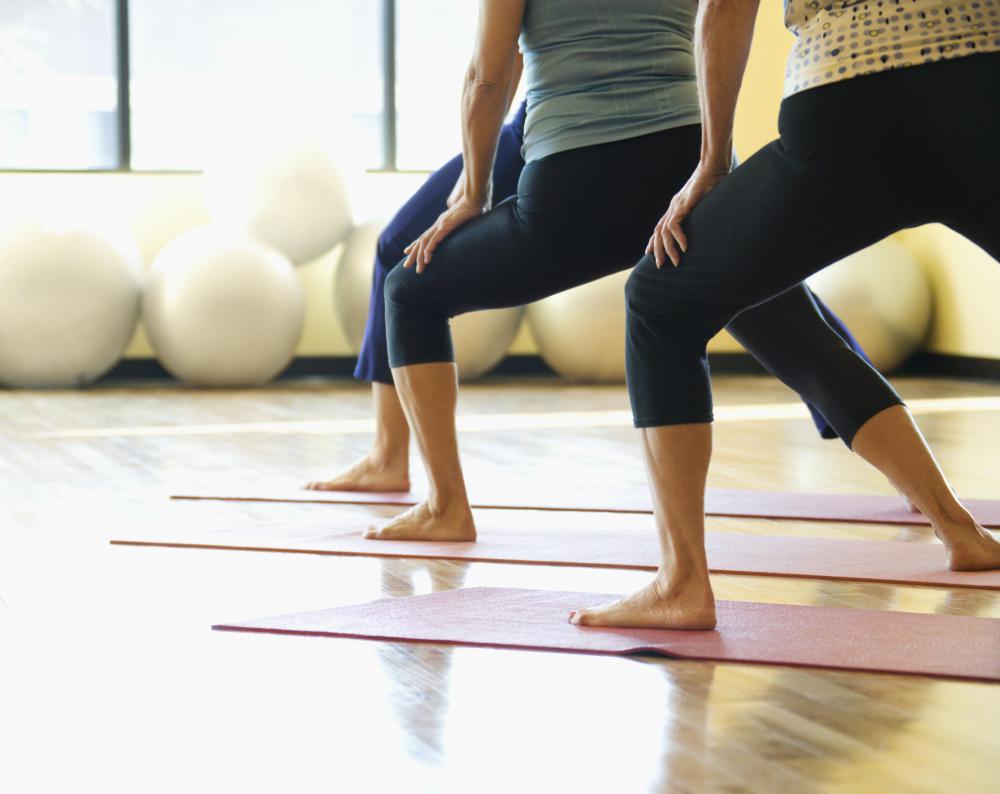At WiseGEEK, we're committed to delivering accurate, trustworthy information. Our expert-authored content is rigorously fact-checked and sourced from credible authorities. Discover how we uphold the highest standards in providing you with reliable knowledge.
What Is Aerobic Yoga?
Aerobic yoga is a style of yoga in which the asanas -- yoga postures -- are sequenced together much faster than they ordinarily would be, in order to get the heart pumping and offer cardiovascular benefits. Some people debate whether aerobic yoga is truly yoga, because the focus on concentration and breath can be lost when moving so quickly. Others prefer this style of yoga because they gain strength and aerobic benefits simultaneously. It is largely a matter of personal preference. There are some common types of yoga that are more aerobic than others; these are power yoga and Ashtanga yoga, but some yoga instructors simply develop their own aerobic programs.
Ashtanga yoga is one of the most common types of aerobic yoga that still follows a "traditional" practice. In this style of yoga, a series of asanas are performed in a predetermined order, typically starting with a series of sun salutations. Throughout the Ashtanga practice, the practitioner should be intensely focused on his or her breath, and maintain a high level of internal concentration. This type of yoga is an extremely challenging, aerobic workout that is said to help to purify the body by building heat and maintaining it throughout the workout.

Another type of yoga, power yoga, is based off the principles in Ashtanga yoga, but it may or may not follow the same series of asanas. Some practitioners use power yoga interchangeably with Ashtanga, but others develop their own programs in which the asanas flow seamlessly from one to the next, but at a very rapid pace. Again, this helps to get the blood pumping and offers cardiovascular benefits, but also promotes strength and flexibility because of the stretching that is found in all forms of yoga. There are some factors to keep in mind before attempting any sort of aerobic yoga, however.

It is much easier to become injured doing aerobic yoga than any other type, and it is not a good fit for beginners. Anyone practicing aerobic yoga should already have a solid foundation in the basics and a regular practice routine. This will help to ensure that he or she does not push herself too soon into challenging poses, or attempt to jump into a pose for which she is not ready. The nature of aerobic yoga makes it more difficult to make the minor corrections and alignments in each posture that are such an important aspect of a yoga in general. Thus, it is important not to attempt it without having a lot of experience.
AS FEATURED ON:
AS FEATURED ON:













Discussion Comments
Virtually all yoga is a religion. Especially if you are chanting "om" or "aum".
Post your comments